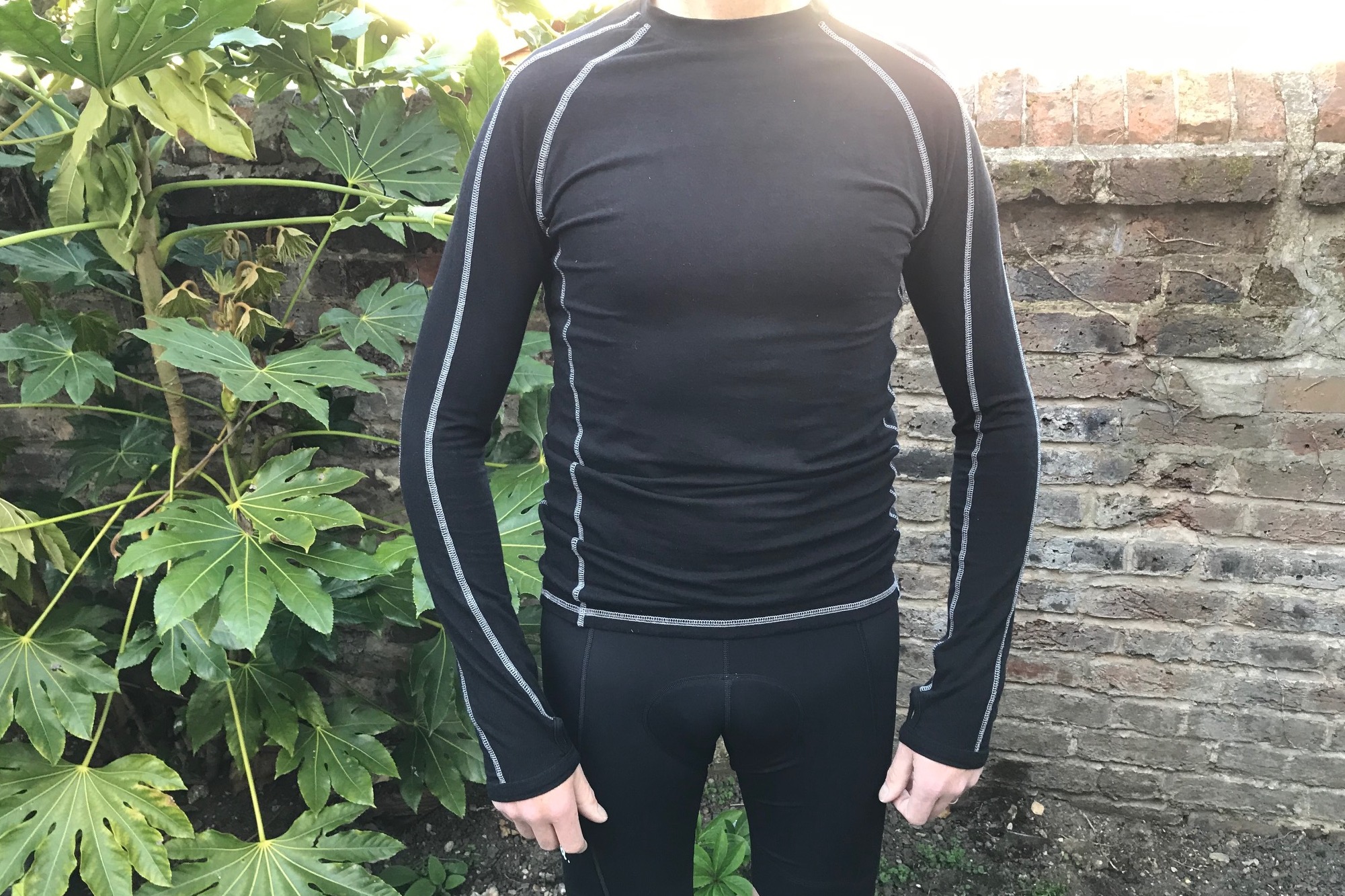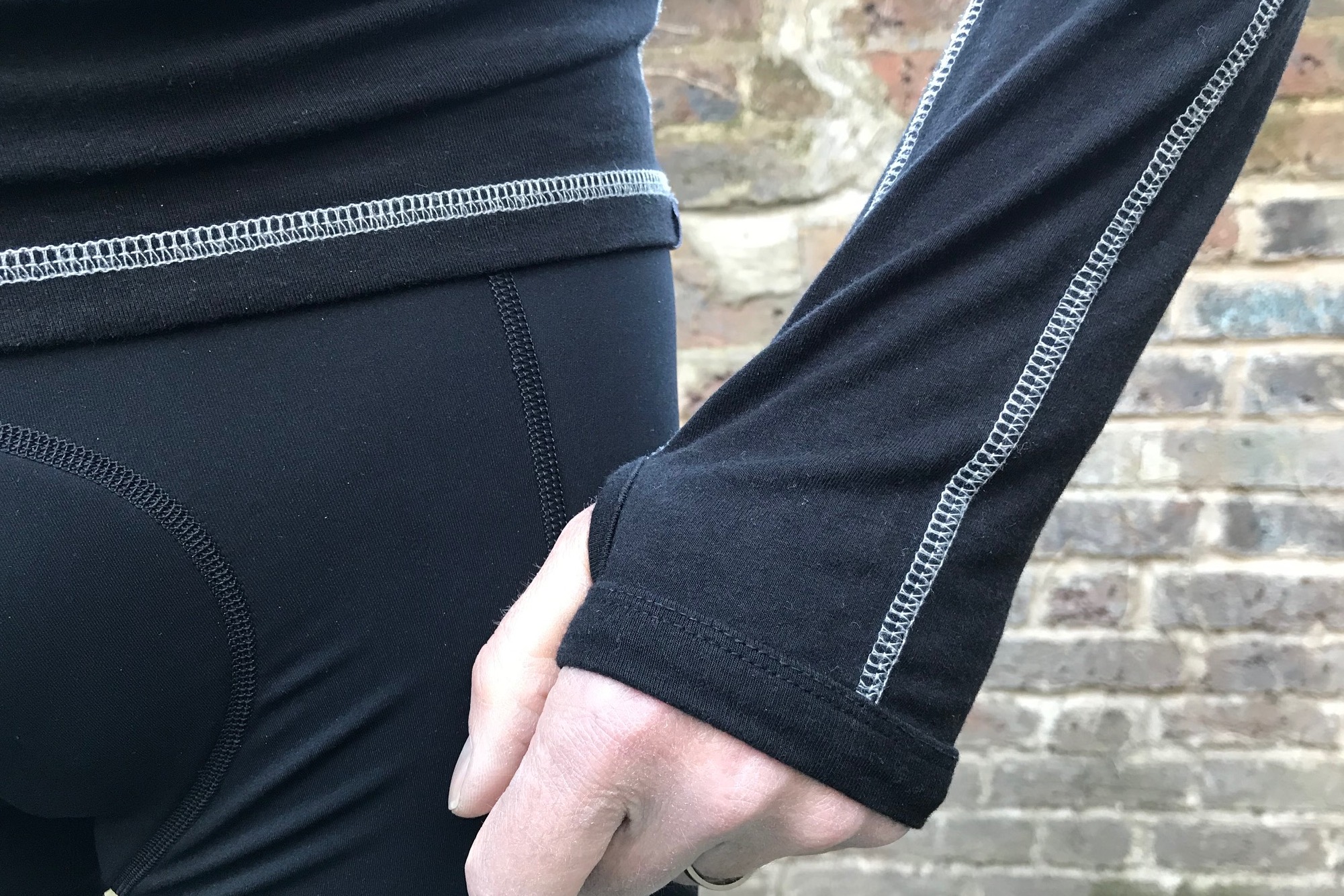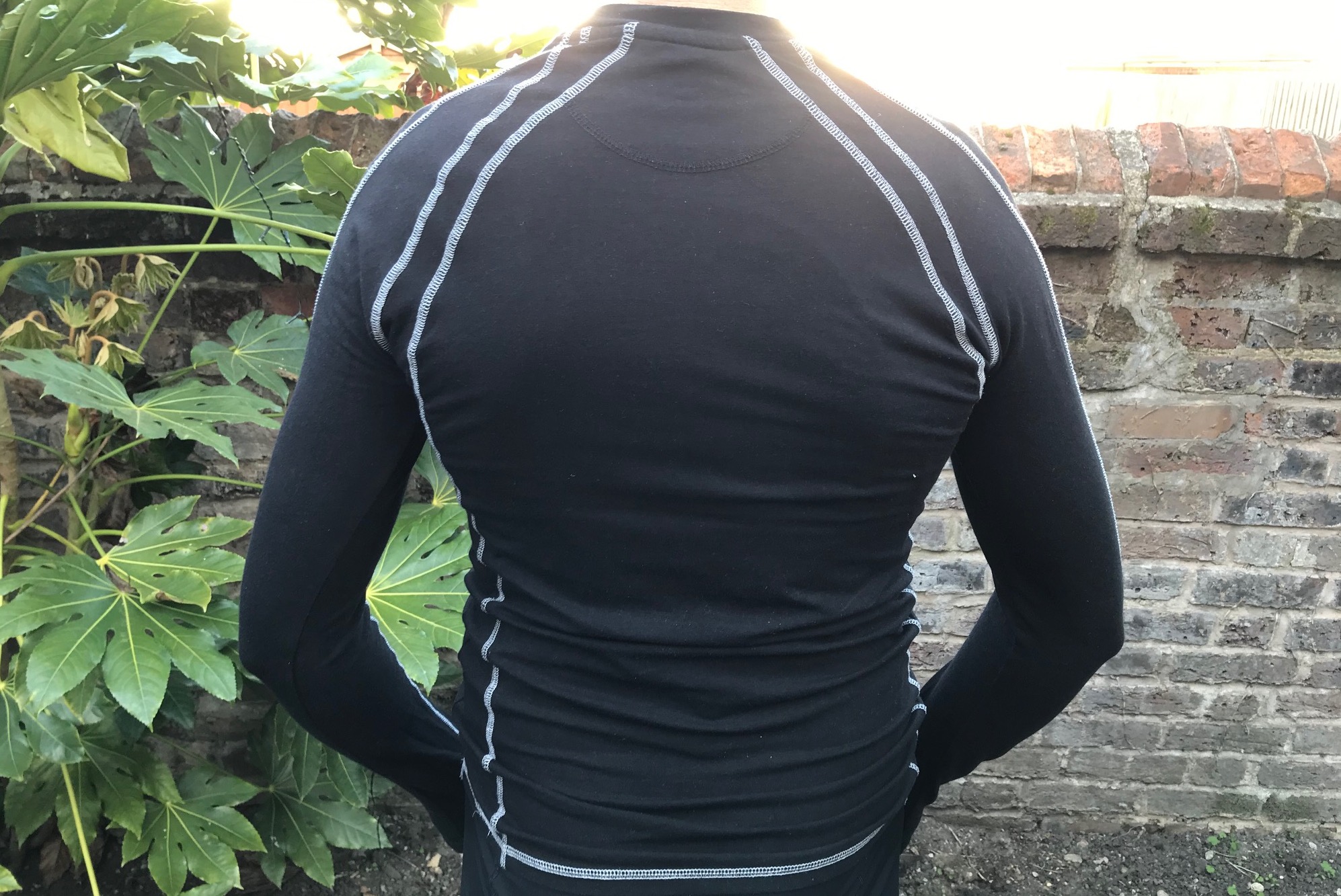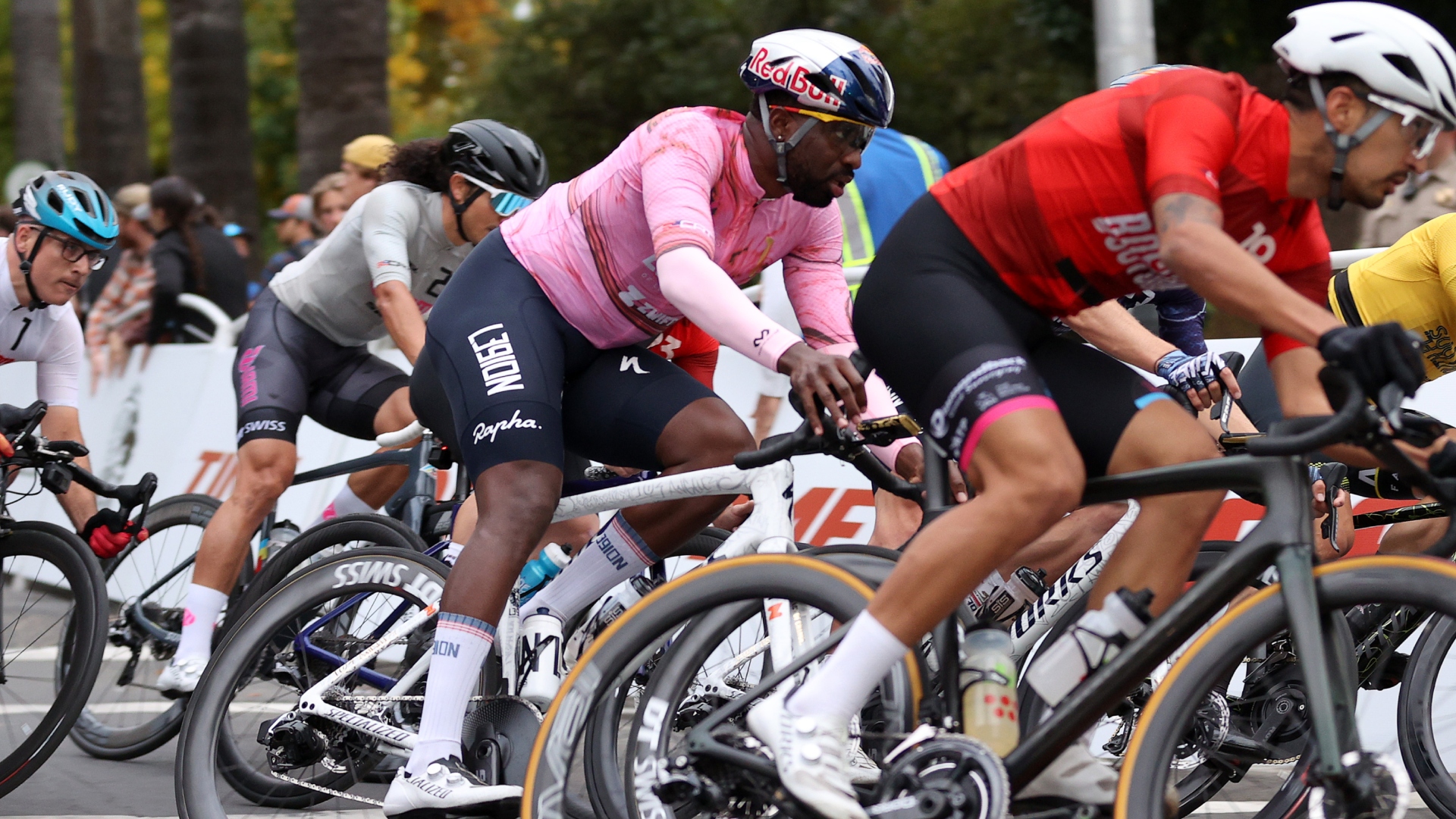BAM Reflex bamboo base layer review
BAM bamboo base layers have everything going for them – not only great performance and great value but also impeccable eco credentials

The BAM Reflex base layer is comfortable, practical, versatile – it works well for any type of activity – and comes with excellent eco credentials as it's made by a company that takes sustainability seriously. If I was being really picky I would prefer it without the thumb loops for cycling.
-
+
Made from sustainable bamboo
-
+
Comfortable
-
+
Warm
-
+
Versatile
-
+
Good fit
-
+
Odour management
-
-
Thumb loops
You can trust Cycling Weekly.

BAM doesn’t make any clothing that it says is cycling specific, but I’ve found the BAM Reflex bamboo base layer works really well on the bike. It’s perfect for running or pretty much any other type of sport you do – and even as a casual top – and it might be my most-worn garment of the last few months.
BAM is obviously short for bamboo – which is what the company’s fabrics are made from – but the name is also a nice bit of onomatopoeia to suggest Impact Positive. BAM says it wants every piece of clothing it sells to have a positive impact on the planet. Its bamboo is sustainable, but the company is also looking at its wider impact, at its supply chain and at what happens when we dispose of its clothes. BAM’s goal is to be impact positive by 2030 and you can read more about how it aims to achieve it here.
So in some ways it’s a shame the company doesn’t try to align itself more with cycling, which is of course also a green activity – though the industry itself arguably has a long way to go.
BAM Reflex bamboo base layer: construction
About bamboo itself: it absorbs five times more carbon than hardwood trees. It needs half the land cotton needs to produce the same amount of fibre and it doesn’t need irrigation or pesticides.
Bamboo has been used to make bike frames in the past, but based on my experience of those I would say it’s much better for making clothes.
BAM says bamboo is to cotton what cashmere is to wool, and that bamboo is three times more absorbent than cotton.
Nobody these days would think about wearing a cotton base layer for cycling, but we love merino, and the feel of the BAM Reflex base layer falls somewhere between the two.
It’s not lightweight: 285g compared to 140g for a Helly Hansen synthetic base layer. Personally, I don't weight-weenie about base layers and I’m fine with that.

The cut is nice and long with raglan sleeves. The stitching between the panels is all flatlocked and there are thumb loops – which won’t be useful for cycling. When I’m running I also like to be able to see my watch. If I could change anything about the BAM Reflex, it would be to lose the thumb loops.
It’s stretchy: the actual construction is 68 per cent bamboo viscose, 28 per cent organic cotton and four per cent elastane, which give it the stretch and helps it keep its shape.
Compared to cycling clothing – especially Italian cycling clothing – it comes up quite big. The size small on me (178cm, 68kg) is close fitting but not skinsuit tight.
There are no women's sizes in the Reflex model, which is for men; the women's equivalent is the BAM Perform. BAM women's base layers are here.
One of the many things about it that I liked was the flattering fit. Narrow shoulders and a waist that has a tendency to expand can be a bad look, but the BAM Reflex is kind to body shapes that aren’t quite godlike.
Ride
Because of its relative thickness, the BAM Reflex is best worn directly under an outer layer than as the bottom layer of multiple ones. The fabric has a slightly higher volume than lighter synthetic fabrics so can’t take the place of a mesh-style base layer – as I said before, it’s more like merino so needs a bit of space.

Underneath a jacket or shell I found it very snug. Thanks to its higher volume it traps warm air very well.
BAM claims that bamboo performs better than any other fabric it knows – and of course it would say that because it makes clothes out of bamboo – but I found bamboo’s warmth, breathability and sweat wicking very impressive.
Compared to synthetic fabrics, it does hold onto moisture more and is not as quick drying, but it makes up for it with its lack of whiffiness. Nylon can get stinky and washing machines can struggle to get the armpits ever to smell fresh again (hopefully that's not just me), but the BAM Reflex passes the sniff test with flying colours. I’d be lying if I said it was completely odour free, because any garment worn regularly for sport eventually succumbs to a degree of residual pong, but when it comes out of a 40° wash that's easily within acceptable parameters.
As for its durability, it has been through many, many washes because I like it so much. These pictures are as it is now, rather than when it first arrived, and it’s still in perfect condition.
Value
At £39 the BAM Reflex is just over half the price of the Ashmei women's long-sleeve merino base layer that Michelle reviewed recently (and noted that the price was very high). The GripGrab Freedom long-sleeve base layer is even higher priced at £89.99. Wiggle's dhb merino base layer is also more expensive at £45 so really the BAM represents good value compared to other base layers that are made from natural/sustainable fibres.

Thank you for reading 20 articles this month* Join now for unlimited access
Enjoy your first month for just £1 / $1 / €1
*Read 5 free articles per month without a subscription

Join now for unlimited access
Try first month for just £1 / $1 / €1
Get The Leadout Newsletter
The latest race content, interviews, features, reviews and expert buying guides, direct to your inbox!
Simon Smythe is a hugely experienced cycling tech writer, who has been writing for Cycling Weekly since 2003. Until recently he was our senior tech writer. In his cycling career Simon has mostly focused on time trialling with a national medal, a few open wins and his club's 30-mile record in his palmares. These days he spends most of his time testing road bikes, or on a tandem doing the school run with his younger son.
-
 How to watch the Amstel Gold Race 2025: Everything you need to live stream the Dutch Classic
How to watch the Amstel Gold Race 2025: Everything you need to live stream the Dutch ClassicAll the broadcast information for the first of the Ardennes Classics on 20 April with Tom Pidcock – here's how to watch Amstel Gold Race online and on TV.
By Adam Becket Published
-
 Can you make a living as an American domestic road racer? A look inside the part-time professionalism of the American road peloton
Can you make a living as an American domestic road racer? A look inside the part-time professionalism of the American road pelotonAfter decades of booms and busts, the American road scene finds itself in a fragile place. We spoke to riders to understand the reality of chasing the dream on home soil
By Logan Jones-Wilkins Published
-
 What does Q36.5 mean? We asked the people behind the Italian kit brand that sponsors Tom Pidcock's team
What does Q36.5 mean? We asked the people behind the Italian kit brand that sponsors Tom Pidcock's teamQ36.5's Luigi Bergamo and Lodovico Pignatti Morano take on Cycling Weekly's Q&A
By Tom Thewlis Published